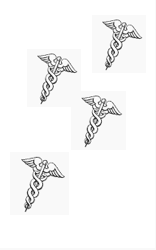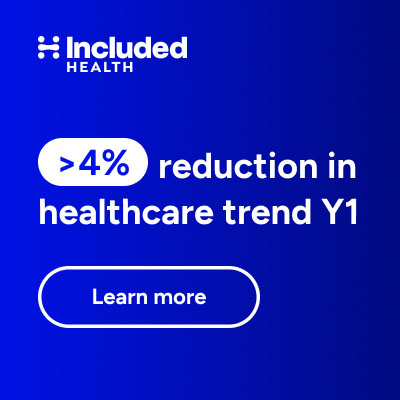Today on Health in 2 Point 00, Jess and I talk about HCA now that the real numbers have come out. On Episode 118, Jess asks me about Aledade raising $64 million. Founded by former ONC director Farzad Mostashari, they set up ACOs for independent physician practices and have been doing a lot around COVID-19. Medopad has rebranded as Huma and acquired Biobeats and Tarilian Laser Technologies (TLT); they’ve been doing remote monitoring and have been around for a while. Novartis acquires Amblyotech, a lazy eye digital therapeutic. Finally Yes Health gets $6 million – yet another “we’ll put you on a diet and have coaches bully you” platform. —Matthew Holt
Health in 2 Point 00, Episode 117 | Wellthy, Lionrock Recovery, Datos and Gaido
On Episode 117, we bring you the late-night edition of Health in 2 Point 00. Jess asks me about Wellthy Therapeutics raising $4 million—they’re a digital therapeutics company I’ve been working with out of the Bayer group, definitely a space to watch. Lionrock Recovery raises $7 million, lots of activity in this area of telehealth for recovery and rehabilitation. Also getting $7 million is Datos Health, an Israeli company with a remote monitoring platform. Finally, Biofourmis acquired Gaido Health, expanding into the oncology space. —Matthew Holt
InTouch Health’s CEO on B2B Telehealth Demand & Post-Covid Virtual Care Market | WTF Health
By JESSICA DaMASSA, WTF HEALTH
“I never anticipated — and no one did — the level of uptake and the level of scale.”
It says a lot that Joe DeVivo, CEO of Intouch Health, who’s worked with hospitals and health systems on standing up B2B-focused telehealth programs for years (and whose company was acquired by Teladoc Health for $600-million dollars in January) is surprised about the uptake of virtual care during the COVID-19 pandemic.
“Historically, I look at virtual care as a bell curve,” says Joe. “On one side of that small tail of the bell curve are the virtual care companies. Teladoc dominates that space for D2C. There’s millions of consultations a year, and we’re seeing a subset of that. On the opposite side of the bell curve is high-acuity, and what InTouch has been doing for critical care.”
“This crisis, and the changes in reimbursement, have opened up the middle of that bell curve. The core, everyday transaction of healthcare is now being impacted by virtual care. And the big question that everyone has is, “is this going to stick? Is this a crisis management tool and we’re going to go back to the ways of the past, or is that genie out of the bottle?”
We put Joe on-the-spot with his own question, find out what he thinks it will take to enable the permanent shift to virtual care at-scale, and dig in on how demand for telehealth within hospitals has changed as a result of the pandemic, where its not only being used to expand access to specialists, but has also been adapted into a PPE-hack to help frontline hospital workers distance themselves from infected patients.
And what of working with Teladoc? While waiting for the paperwork to finalize (all on-schedule for the end of Q2 as originally announced), the two have organized a co-selling agreement to be able to “hit the market fast” and bring their “hospital-to-home” end-to-end virtual care offering to those who need it now.
How Will COVID-19 Impact Medical Malpractice, Healthcare Worker’s Comp Insurance? | WTF Health
By JESSICA DaMASSA, WTF HEALTH
COVID-19 testing in grocery store parking lots. Clinicians crossing state lines to practice in hard-hit hospitals miles away from their health system. ICU doctors made to shore up shortages of ventilators by adapting medical equipment from its intended purpose. Are these just medical malpractice suits waiting to happen?
Margaret Nekic, CEO of Inspirien, a hospital-and-physician-owned medical malpractice and worker’s comp insurance company, reveals what’s happening behind-the-scenes as professional liability carriers hurry to adapt to the changing circumstances of a healthcare system thrown into crisis-mode.
While new legislation is emerging to somewhat safeguard healthcare workers from bearing the risk of some of the pandemic’s unprecedented circumstances, what happens when the immediate surge has passed? Will costs for medmal insurance go up? And, what happens from a worker’s comp standpoint if a healthcare worker becomes infected with COVID-19?
As healthcare delivery in hospitals continues to change — and, at the same time, more and more care extends outside the traditional doctor’s office by way of an uptick in use of digital health and telehealth options among non-COVID patients — it seems the pandemic might ultimately also accelerate changes in the way healthcare organizations think about risk management and their insurance coverage for it.
American Hospital Association’s Top Advocacy Efforts Amid COVID-19 Outbreak | WTF Health
By JESSICA DaMASSA, WTF HEALTH
As hospitals focus on taking care of COVID-19 patients, the American Hospital Association is stepping up its advocacy for hospitals, fighting on their behalf for everything from PPE to reimbursement for uninsured patients. AHA’s Policy Director, Akin Demehin, dives into the top issues facing U.S. hospital administrators as they scramble to adjust their businesses to meet the unprecedented demands of the pandemic.
Besides the obvious concerns related to the direct delivery of care to a surge of very sick patients, hospitals are worried about cash flow, having enough personal protective equipment (PPE) for front-line clinicians, and the challenges of rolling out massive telehealth and remote monitoring programs to care for non-COVID patients at-home.
As the pandemic wears on, and the evolution of hospitals continues, the way these institutions function as part of the U.S. healthcare system will likely be forever changed. We learn what’s important to the AHA — and its 5,000 hospitals and healthcare system members — as they redefine their role in the healthcare system of the future in real-time.
Health in 2 Point 00, Episode 116 | Telehealth $$, Layoffs and Rock Health’s Q1 fundraising report
Today on Health in 2 Point 00, Jess and I run through a lot of telehealth investments including Doctor Anywhere raising $27 million, 98point6 raising $43 million, Tyto Care raising $50 million, SilverCloud Health raising $16 million, SteadyMD raising $6 million, and Aktiia raising $6 million. In addition, there’s a company called Air Doctor which matches people when they’re traveling to doctors on the ground which raised $7.8 million despite the inauspicious timing. On the flip side, there have been a slew of layoffs in the space, and Jess and I give our $.02 on Rock Health’s Q1 fundraising report which was just released. Don’t miss our tag-team interview of Livongo’s Glen Tullman, and check out these episodes in podcast form on Spotify and iTunes. —Matthew Holt
Glen Tullman, Livongo, Live with Jess & Matthew

Fresh off of a press junket that included talking to Jim Cramer on CNBC & hanging with Maria Bartiromo on Fox Business News, Livongo Health’s Glen Tullman stopped by THCB to talk about the impact of #covid19 (& more) on health tech. Jessica DaMassa and Matthew Holt tag-team interviewed him on Weds 8th April. (Full transcript is below the video)
Here is the transcript:
Matthew:
Hi, this is Matthew Holt from The Health Care Blog.
Continue reading…Blue Cross NC Chief Medical Officer on “Flipping the Switch” To Telehealth at Parity | WTF Health
By JESSICA DaMASSA, WTF HEALTH
In the early days of the U.S. COVID-19 outbreak, BlueCross BlueShield of North Carolina (Blue Cross NC) stepped up as one of the first health insurance plans to announce reimbursing telehealth visits “at parity” with face-to-face office visits for all providers and specialists. Chief Medical Officer Rahul Rajkumar talks us through the strategy behind that decision to “flip the switch” for telemedicine — which was made in just one meeting (!) – and what metrics and outcomes the Blue plan will be looking at post-pandemic to decide if the switch remains on.
Conversation Highlights:
- Changing reimbursement policies to cover ALL COVID-19 testing and treatment
- 6:45 min: The role of virtual care during COVID-19 and reimbursement at parity
- 11:11 min: How will telehealth be evaluated post-epidemic?
- 13:58 min: Telehealth innovation, B2B use, remote monitoring (looking to providers to lead the way)
- 17:25 min: What’s going to happen with healthcare costs in 2021?
For more on how health tech companies in digital health, telehealth, remote monitoring, health data, and more are responding to the COVID-19 crisis, check out the other interviews in this special series at www.wtf.health/covid19.
Understanding Covid19: How Data From People’s Daily Lives, Flu Outbreak Models Can Help | WTF Health
By JESSICA DaMASSA, WTF HEALTH
In the face of Covid-19, health tech startup Evidation Health is leveraging their relationships with the 4-million people on their Achievement app, the “always on” stream of behavioral data these folks bring to the table via wearables, sensors, and surveys, and everything they’ve learned from years of studying and modeling flu outbreaks to examine the Covid-19 virus in the context of people’s everyday lives.
Evidation’s CEO, Deb Kilpatrick, and Sr. Data Scientist, Ernesto Ramirez, stop by to talk about their company’s efforts for large-scale, frequent symptom surveillance of Covid-19 to add new insights to our understanding of the pandemic and, possibly, even help with making predictions about its spread and severity.
The company is already publishing some of its findings in a weekly report called “Covid-19 Pulse” that is already gleaning insights from a 150,000+ person cohort asked to weigh-in specifically on what they’re doing and how their lives are changing as a result of the pandemic. What’s unique in Evidation’s spin is that they’re adding that critical data from “daily life” that is more or less missed by just looking at the data reported from those who’ve entered the hospital.
“Those folks that are presenting into the medical system — that’s not the full picture of what’s going on,” says Ramirez. “What we need to do is better understand, really, what’s going on at the community level to understand community spread, to understand surveillance efforts, to understand mitigation efforts that may or may not be having impact around the spread of Covid-19.”
Health in 2 Point 00, Episode 115 | Olive, Bright.md and AristaMD
Today on Health in 2 Point 00, we have a no-nonsense April 1st episode—with deals this time! On Episode 115, Jess asks me about Olive raising $51 million for its AI-enabled revenue cycle management solution, Bright.md raising an $8 million Series C for its asynchronous telemedicine platform, and AristaMD raising $18 million for a different sort of telemedicine, eConsults, which allow primary care physicians to consult with specialists virtually. —Matthew Holt











